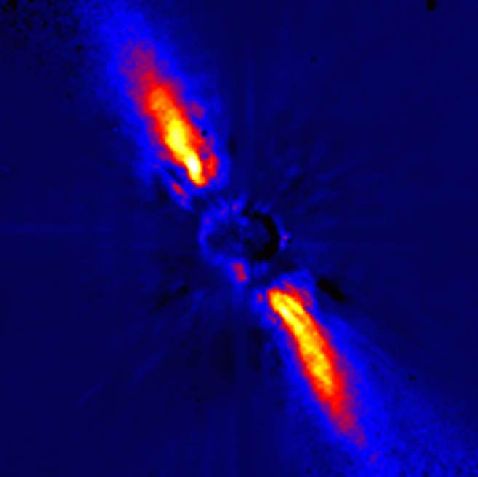Beta Pictoris (β Pic / β Pictoris) is part of a group of hot young stars that have the same age and motion through stage. It’s best known for the fact that it’s surrounded by a dusty ‘debris’ disc. This disc is a result of collisions between planetary ’embryos’ and asteroids, or other such objects.
Recently, a team of French astronomers from ESO located an object situated very close (relatively) to the star. At only 8 times the Earth-Sun distance, this object is probably the giant planet suspected from the peculiar shape of the disc. It would be the first planet as close to its star as Saturn is to the Sun
“These are indirect, but tell-tale signs that strongly suggest the presence of a massive planet lying between 5 and 10 times the mean Earth-Sun distance from its host star,” says team leader Anne-Marie Lagrange. “However, probing the very inner region of the disc, so close to the glowing star, is a most challenging task.”
“For this, the real challenge is to identify and subtract as accurately as possible the bright stellar halo,” explains Lagrange. “We were able to achieve this after a precise and drastic selection of the best images recorded during our observations[..], [which] point to the presence of a giant planet, about 8 times as massive as Jupiter and with a projected distance from its star of about 8 times the Earth-Sun distance, which is about the distance of Saturn in our Solar System ,” she adds.
“We cannot yet rule out definitively, however, that the candidate companion could be a foreground or background object,” cautions co-worker Gael Chauvin. “To eliminate this very small possibility, we will need to make new observations that confirm the nature of the discovery.”










